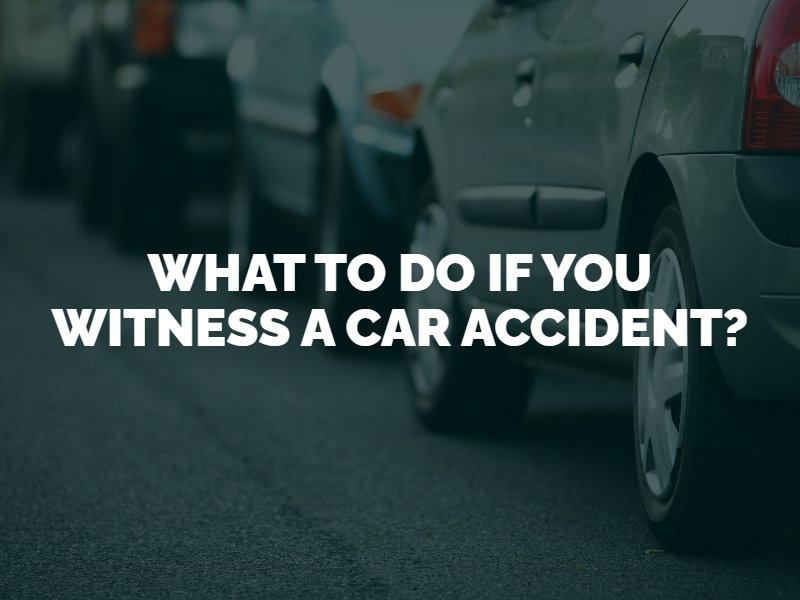We’ve all given in to curiosity and slowed down when passing the aftermath of a car accident on the roadside when emergency vehicles are present and dealing with injuries and damaged cars. But what if instead of passing an accident that’s already occurred, one unfolds right in front of you? Whether you’re driving on a roadway and a crash occurs in your vicinity, or you’re a pedestrian who witnesses a car accident, it’s difficult to underestimate the trauma of hearing crashing metal and glass and witnessing the terror of injured motorists at the scene. But what should you do as a witness to a serious car accident? What level of involvement is acceptable, and how should you help? The Seattle personal injury lawyers at Fang Law Firm are here to help inform you on what to do.

Some witnesses to car accidents react on their instincts to run over and help the terrified victims but it’s critical to protect your safety so as not to become another casualty. Some accidents cause chain reactions as other cars enter the scene and don’t have time to avoid follow-up impacts leading to a multi-car pileup. If you were driving when the accident occurred near you, find a safe space to pull over, well onto the shoulder of the road or off the road completely. Turn on your emergency flashers to ensure that other drivers can see your car on the shoulder.
As you carefully approach the crashed vehicles, use your phone to call 911 to report the accident. Even when others are already on the scene, they may be busy helping victims and may not have called to report the accident. It’s acceptable and common for multiple callers to report the same accident.
While on the phone with the 911 dispatcher, tell them the location of the accident to the best of your ability. Report the number of involved vehicles, the types of vehicles, and the number of injury victims. Tell the dispatcher if the accident is a minor traffic accident with property damage only or a serious accident with multiple injuries.
In some cases, 911 may ask you to remain on the line with them while they dispatch emergency vehicles to your location. If it appears safe to approach injured victims, you may give them reasonable aid and comfort but don’t try to move them unless they are in imminent danger, such as in a burning vehicle. The 911 operator can tell you how to apply basic first aid in life-or-death situations, or you can simply offer to hold an injured victim’s hand and comfort them with your presence while you wait for help. If you must move the victims due to fire or traffic danger, secure the head and neck as much as possible.
Unless you commit gross negligence, you cannot be held liable if you accidentally cause harm while trying to render aid under the Good Samaritan Laws; however, keeping contact with 911 through a cellphone is the best protection for yourself legally as well as for the injured victim’s protection. The dispatcher can talk you through safely moving an injury victim.
If you witnessed the entire accident, you could be the key to the injury victims gaining compensation for their injuries later. Give a detailed statement about what you witnessed and leave your contact information with the police. Keep in mind, if you were involved in the accident as well, contact a car accident lawyer in Seattle, before making statements related to the accident.
In some accident cases, injury victims also ask for witness’s contact information so they can reach out to them later if they need the testimony to claim damages from the party at fault. In other cases, injury victims may ask you to photograph the damaged vehicles and the accident scene with your phone or theirs to document evidence. This can help them recover compensation for property damage, medical expenses, and pain and lost income later.
As an eyewitness, you may be called upon later to give a deposition describing what you witnessed or to testify in court if the case goes to trial rather than resolving with a settlement from the at-fault party’s insurance company.
Being a witness to an accident is a traumatic experience for anyone, but being in a position to help after an accident is an important responsibility and something to be proud of as you move forward.